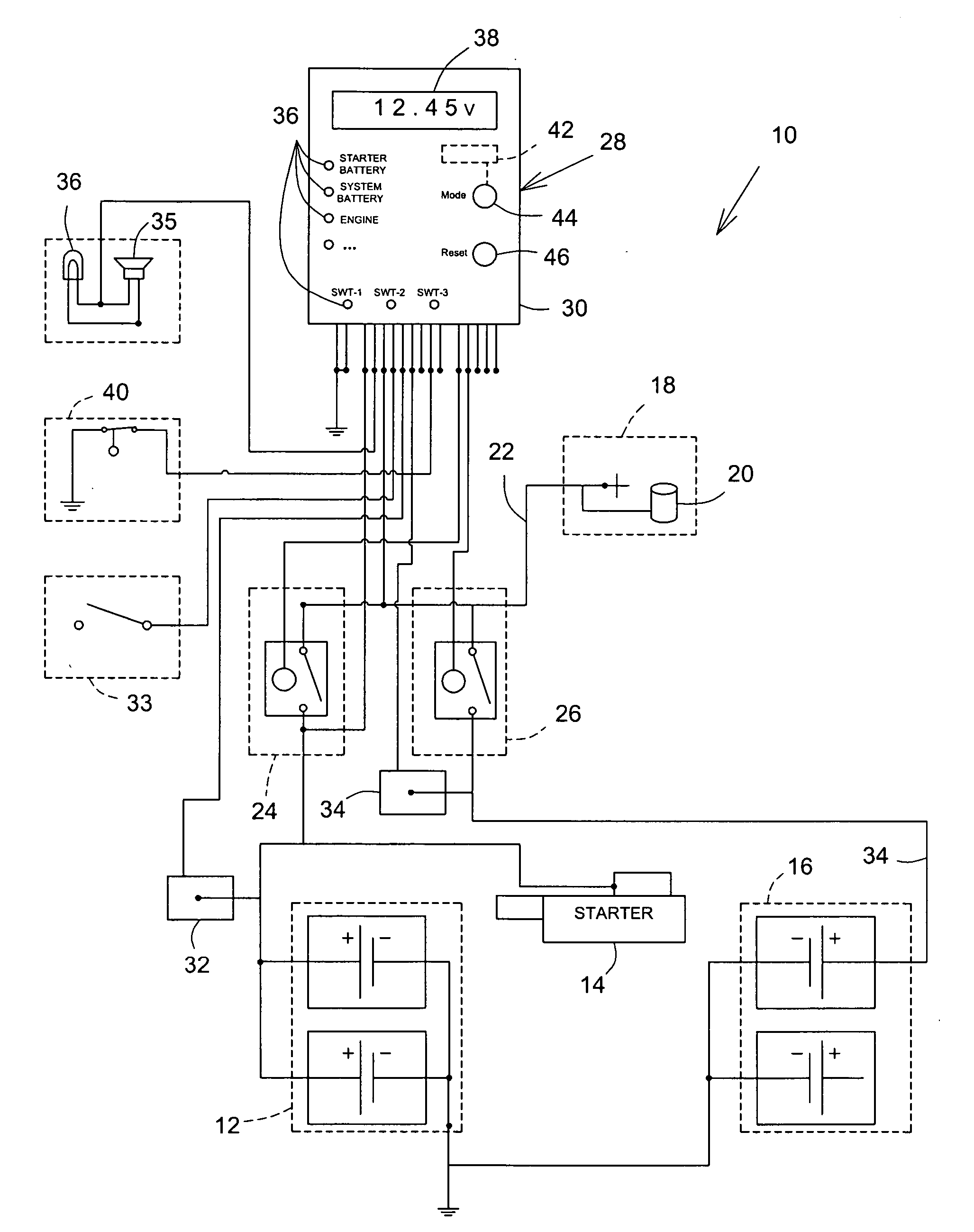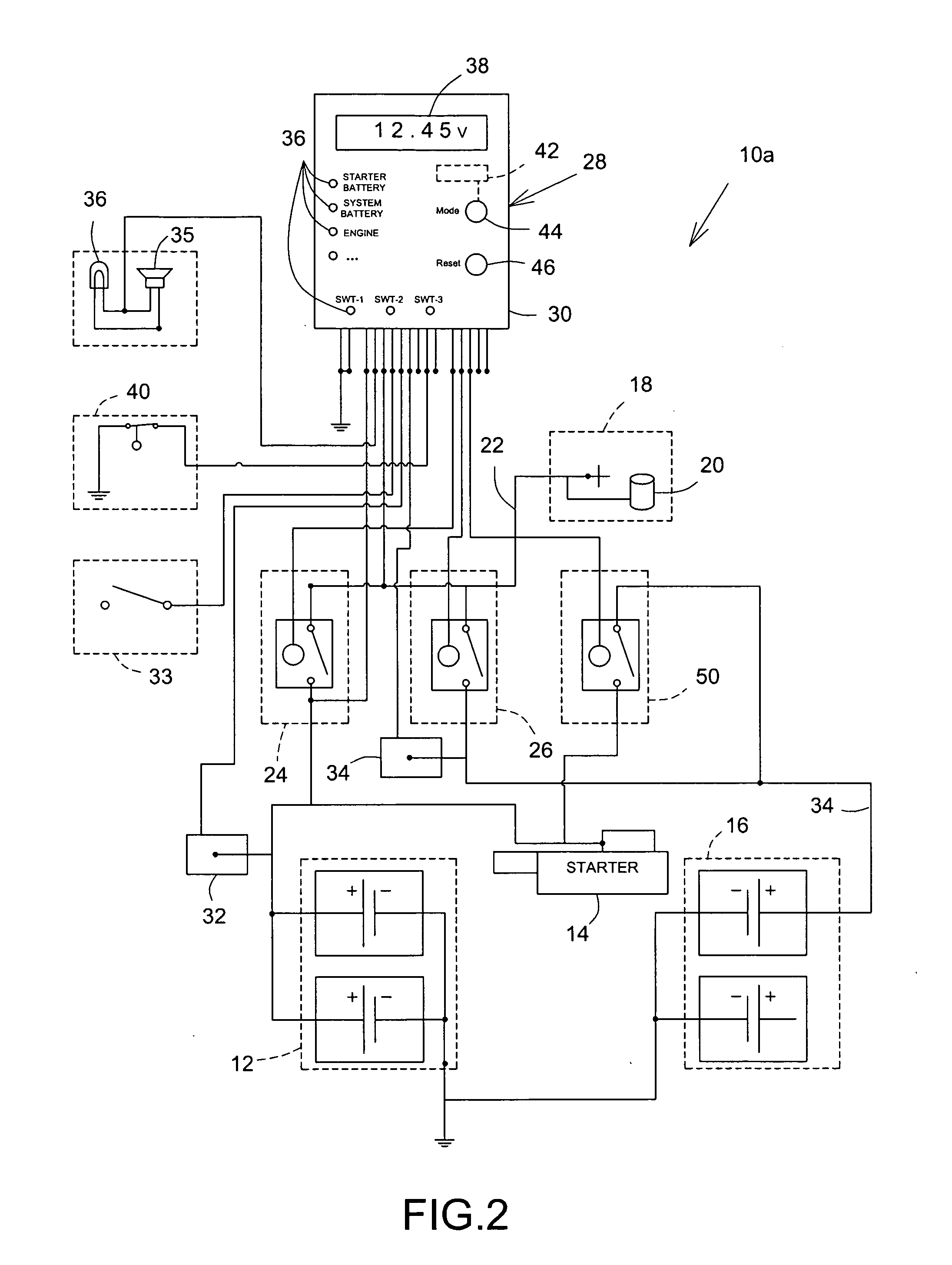Isolated dual battery system
a dual-batteries, battery technology, applied in the direction of dc source parallel operation, single ac network with different frequencies, ac network with different sources at the same frequency, etc., can solve the problems of system work at the expense of providing power for electrical accessories, inconvenient and potential drawbacks for users, and large current demands, so as to reduce the life cycle increase the safety of the truck/trailer, and increase the life of each type of battery
- Summary
- Abstract
- Description
- Claims
- Application Information
AI Technical Summary
Benefits of technology
Problems solved by technology
Method used
Image
Examples
Embodiment Construction
[0064] With reference to the annexed drawings the preferred embodiments of the present invention will be herein described for indicative purpose and by no means as of limitation.
[0065] It is noted that the terms battery, batteries, battery power source, and power source used throughout the following description refer to one or a group of batteries connected in parallel to supply power to consumers connected thereto. It could eventually be a generator, another engine, etc. depending on the configuration of the system.
[0066] Referring to FIG. 1, there is schematically shown an isolated dual power source system 10 in accordance with an embodiment of the present invention.
[0067] The system 10 is for isolating a first power source 12 or starter battery of a vehicle (not shown) such as a tractor / trailer, truck or the like, connected to a starting and intermittent power consumer 14 or starter for starting an engine (not shown) of the vehicle, from a second power source 16 or vehicle ele...
PUM
 Login to View More
Login to View More Abstract
Description
Claims
Application Information
 Login to View More
Login to View More - R&D
- Intellectual Property
- Life Sciences
- Materials
- Tech Scout
- Unparalleled Data Quality
- Higher Quality Content
- 60% Fewer Hallucinations
Browse by: Latest US Patents, China's latest patents, Technical Efficacy Thesaurus, Application Domain, Technology Topic, Popular Technical Reports.
© 2025 PatSnap. All rights reserved.Legal|Privacy policy|Modern Slavery Act Transparency Statement|Sitemap|About US| Contact US: help@patsnap.com



